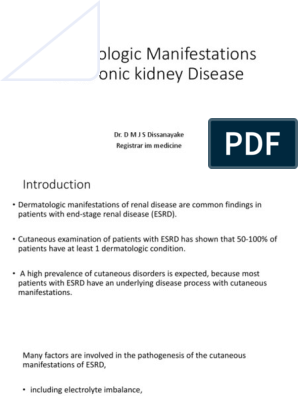0% found this document useful (0 votes)
41 views54 pagesLecture 7 CKD - Chronic Kidney Disease 1 - 2
Uploaded by
majd danCopyright
© © All Rights Reserved
We take content rights seriously. If you suspect this is your content, claim it here.
Available Formats
Download as PDF, TXT or read online on Scribd
0% found this document useful (0 votes)
41 views54 pagesLecture 7 CKD - Chronic Kidney Disease 1 - 2
Uploaded by
majd danCopyright
© © All Rights Reserved
We take content rights seriously. If you suspect this is your content, claim it here.
Available Formats
Download as PDF, TXT or read online on Scribd
/ 54



























































































